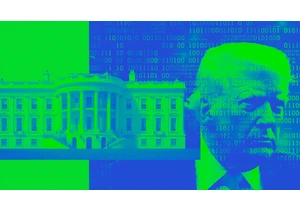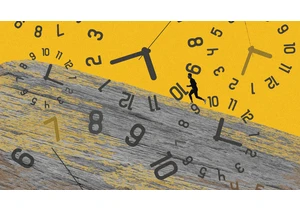Deepfakes are running amok and it’s becoming increasingly difficult to detect what’s real or not online.
Even after the release of high-profile deepfake detection tools from the likes of OpenAI and Microsoft, many remain skeptical that the technology will actually prove effective given how easily deepfake images and videos can be replicated (rendering them undetectable by most tools currently available).
But lost in that concern is an altogether rosier element of the deepfake revolution—and it’s one that some experts say could be particularly beneficial for social change and psychotherapy practices. They imagined implementing the tech in VR goggles to correct racist historical sites IRL and giving people an opportunity to confront past traumas or loved ones they’ve lost in an evocative way.
“Imagine a world where we can not only review writings or speeches of historical figures but actually interact with their likeness to better understand the context around their past actions, or to get their perspective on present-day events,” says Aaron Painter, the CEO of the digital identity verification company Nametag.
Other experts identified similar opportunities, like implementing deepfakes with VR in order to highlight racist or bigoted subtexts at historic monuments. “Monuments of the South are perhaps the very definition of fake content, propaganda deployed for false glorification,” says Davi Ottenheimer, the vice president of Trust and Digital Ethics at Inrupt, a software and security company. He imagines: “As you approach a Lee statue, an overlay could appear, detailing that it was erected in the early 1900s and explaining the racist motivations behind it — specifically during the Jim Crow era — monuments of racism to support and inflame white supremacist resistance to civil rights for Black Americans.”
Ottenheimer also suggested that a deepfake-embedded VR tool could make history more enriching and not just a culture of archiving facts. For example, “deepfakes would completely transform war memorials by bringing to life the significant roles of hundreds of thousands of American soldiers who have been almost entirely ignored by their country,” he says.
Outside the worlds of tourism and history, deepfake technology could be wielded in the mental health space. Clients who’ve suffered profound loss or deeply emotionally impairing events could literally confronted them with imagery that allows them to heal. In recent years, mental health experts have begun researching just that, with a 2022 report suggesting that sexual assault survivors responded positively to using deepfake technology as a means to confront past perpetrators.
“All of us have suffered loss when someone passes, and the ability to recreate the likeness of a friend, family member, or even a colleague could allow the memory and experiences of that person to live on and be a companion as we face current challenges,” says Painter.
It can also be used as positive reminders for people who are especially self-critical or high achievers: “Few people I know end their day feeling they accomplished everything they wished,” he adds. “Recreating an AI version of ourselves could allow people to scale their own impact by accomplishing activities or chores that we don’t have time to do.”
It may take several more years for deepfake detection to become truly useful—and for people to view the tech less negatively—so experts urge users to stay vigilant online. “Fraudsters can not only easily create realistic-looking images, they can also create voices that sound like our loved ones, and create videos that look like people we know and trust,” says Painter.
To spot deepfakes, pay close attention to the details of an image, especially around facial features. The texture and tone of someone’s face should match the rest of their body, and if the subject is speaking, make sure their mouth movements are in sync with the audio.
“Every online and telephone interaction needs to be approached with a healthy degree of caution and skepticism” these days, Painter says.
Melden Sie sich an, um einen Kommentar hinzuzufügen
Andere Beiträge in dieser Gruppe

Good news: Vine might be coming back. Bad news: in AI form, courtesy o

A stable “release” version of Apple’s iOS 26 is due in September, but you can now try an in-progress version, called the public beta. It previews a revamped interface and new fea


">Tear a tanktop in half today for Terry Bollea, the entertainer better known as Hulk Hogan, who has died at age 71.
Though he was

Welcome to AI Decoded, Fast Company’s weekly newsletter that breaks down the most important news in

The data nerds are fighting back.
After watching data sets be altered or d

Chris Guillebeau spent years racing against time, visiting all 193 countries before he turned 35, hosting annual gatherings of thousands, and writing bestsellers like The $100 Startup. Bu
